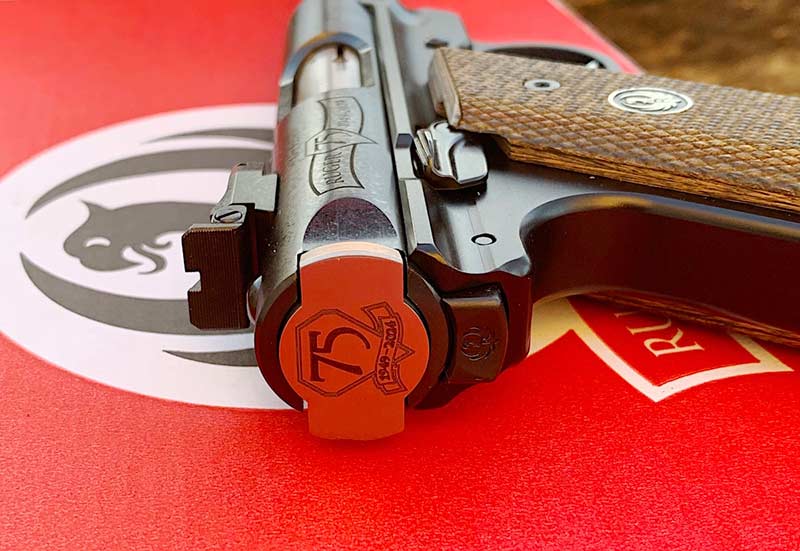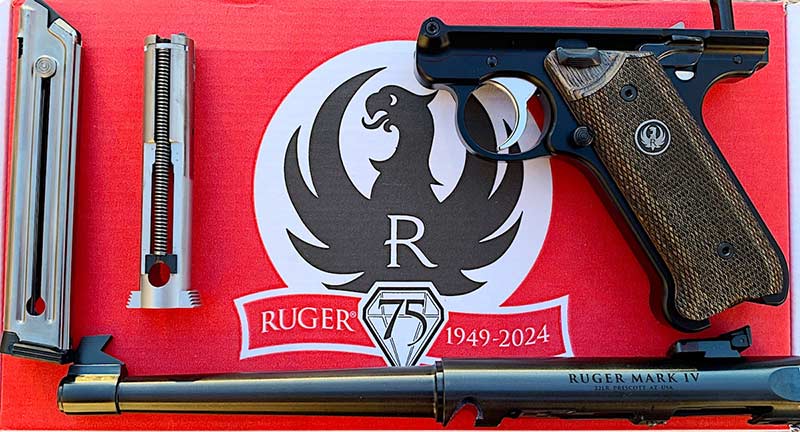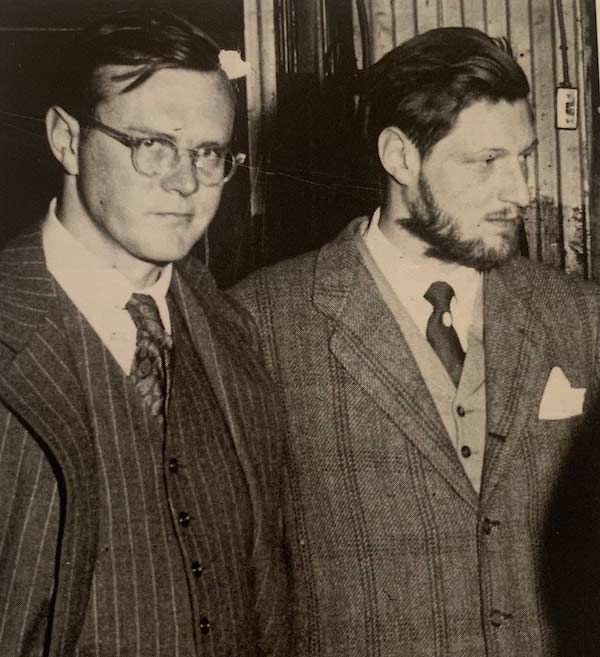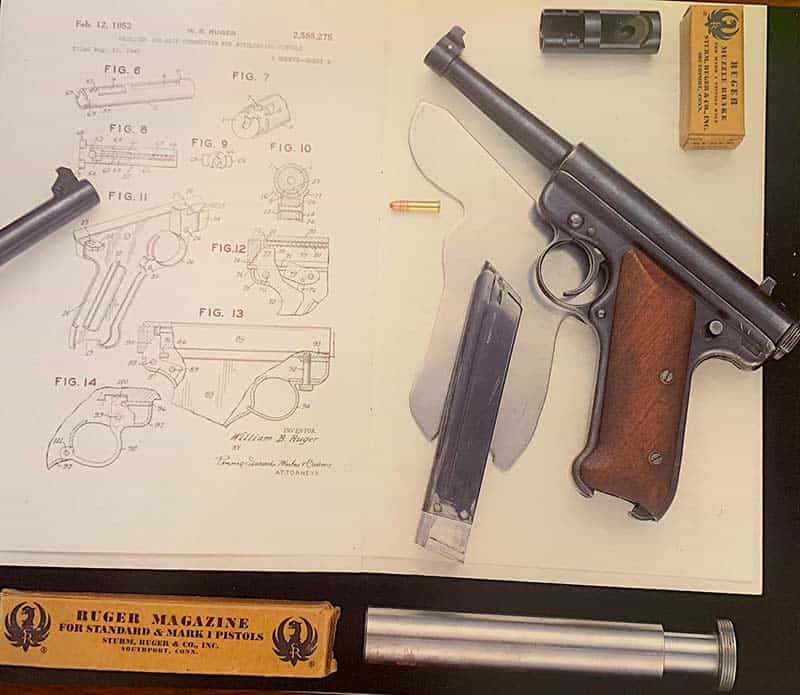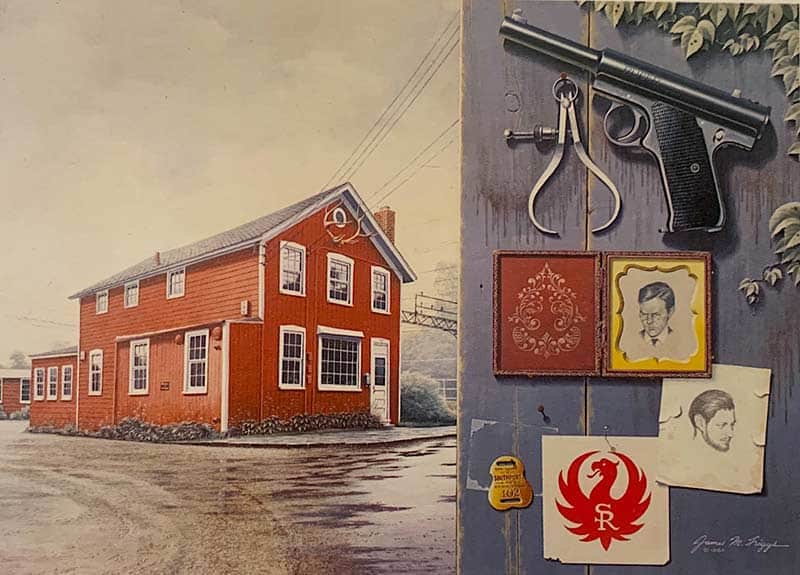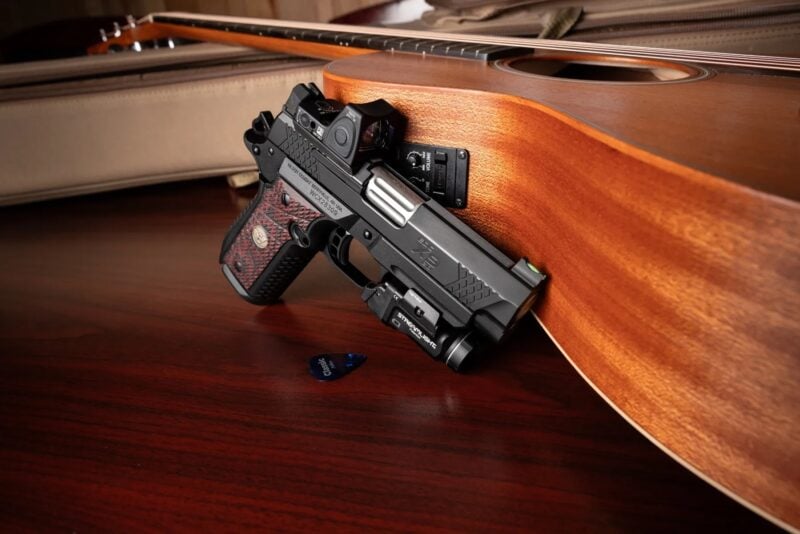Ruger 75th Anniversary
MKIV .22 Pistol
And A Little History Behind It
Most of my guns wear the Ruger logo, and it’s not by accident. While acquiring them, my intentions were clear. Ruger’s are known for strength, durability and quality. Being priced for the working man sure doesn’t hurt, either.
My first Ruger was the classic 10/22 semi-auto rifle with a rotary magazine. I still have it. After digesting several hundred bulk packs of .22 ammo, it’s still as accurate as the day I got it. Now, it handles most of my daughter’s .22 shooting chores.
First Handgun
My first handgun was compliments of the Montgomery County, Maryland Police Department — a Ruger Service Six .38 special. I learned double-action shooting and the proper technique for dumping empties and loading either loose cartridges or speed loaders. The seed for my long love affair with Ruger firearms was planted from this gun.
Our academy firearms instructor explained we’d never wear them out, telling us they’d get smoother the more we shot them. And they did. His words rang loud and strong, sticking with me my entire life. A long line of Ruger’s has since been added to my stable of shooters, each proving those initial words true.
Ruger Anniversary Model
This year marks Sturm, Ruger & Co.’s 75th Anniversary, which means they will have some awesome guns to celebrate such a huge milestone — one of which is a nifty Ruger MKIV .22 LR pistol. The anniversary model carries the looks of the previously designed MKI Target model, only in MKIV guise. A heavier, tapered 6.88” barrel sporting adjustable rear sights is used. Combined with an undercut patridge front sight, it produces a sharp sight picture and a long sight radius for excellent accuracy and balance. Plus, being in the MKIV configuration, it has easy, no tool take-down capabilities. Simply push a button and lift the barrel assembly off the aluminum grip frame.
The gun is laser engraved on the barrel and back of the bolt to commemorate the company’s milestone anniversary. It sports fully checkered, wood laminate grips providing a beautiful nostalgic look while giving good grip purchase. Other features include an ergonomic bolt stop, contoured ejection port for positive ejection, serrated bolt ears for positive activation, and internal cylindrical bolt construction. The grip frame is one-piece precision CNC-machined aluminum. The gun ships in a vintage-styled commemorative cardboard box with a 75th Anniversary decal.
A Step Back
Seventy-five years ago, you could buy a new standard model .22 auto-loading pistol from a new, unheard-of manufacturer. Called Sturm, Ruger &. Co., Bill Ruger designed the standard model .22 semi-auto pistol and advertised it in American Rifleman for a whopping $37.50. It was just the beginning for the small company.
Backed financially by Alex Sturm, Bill Ruger was the brains of the outfit. Starting with an initial $50,000 in seed money, Ruger designed, tooled up, built and sold the standard model pistol. It was the start of a huge, successful empire, and he did it all with no formal training in firearms design or manufacturing.
As a teenager, Ruger simply read everything he could find at the library on these subjects. Besides his mechanical and manufacturing genius, he was a savvy businessman, not scared of taking risks on what he thought the public wanted. Two cases in point, a single action revolver and his #1 single shot rifle. Ruger’s advisors thought him crazy for even considering such guns, but in the end, Bill Ruger was proven right.
Pistol Evolution
While looking like a WWII German Luger, the standard .22 model has a cylindrical bolt like the Japanese Nambu pistol. The magazine is released from the heel. In 1951, the MKI was released, having an adjustable rear sight and a heavier tapered barrel. The MKII came out in ’82-’85 and added a bolt stop. In 2005, the MKIII came out, adding a thumb-operated magazine release. Finally, in 2016, the Ruger MKIV was released with the easy, one-button take-down feature. Sure, there are more intricate differences, but these are the main changes.
Shooting
Shooting was done at 50 feet, elbows on table, using Federal “bulk” ammo. Black round stickers measuring .6” were used as targets with strings of five shots per group. These were the first shots fired from the gun; as you can see, it performed well. I’m sure if better ammunition were used, as well as proper sandbag rest, groups would tighten considerably. Still, it’s not a bad showing for a maiden voyage. This gun will not be going back to Ruger, as it will join the rest of my Ruger corral.
Final Word
The Ruger MKIV Anniversary model is a splendid meshing of today’s modern MKIV with the nostalgic looks of the original Standard model and MKI Target. You should get yours before they’re gone. There’s no better way to celebrate Ruger’s 75th Anniversary, giving you the perfect reason for buying another gun.
Bill Ruger was the genius behind starting a small gun manufacturing business back in 1949. He proved he was up for the challenge by sticking his neck out. Over the years, he added new models and types of guns until eventually becoming one of the world’s largest and most successful gun manufacturers. For that, we can be thankful. I know I sure am.

